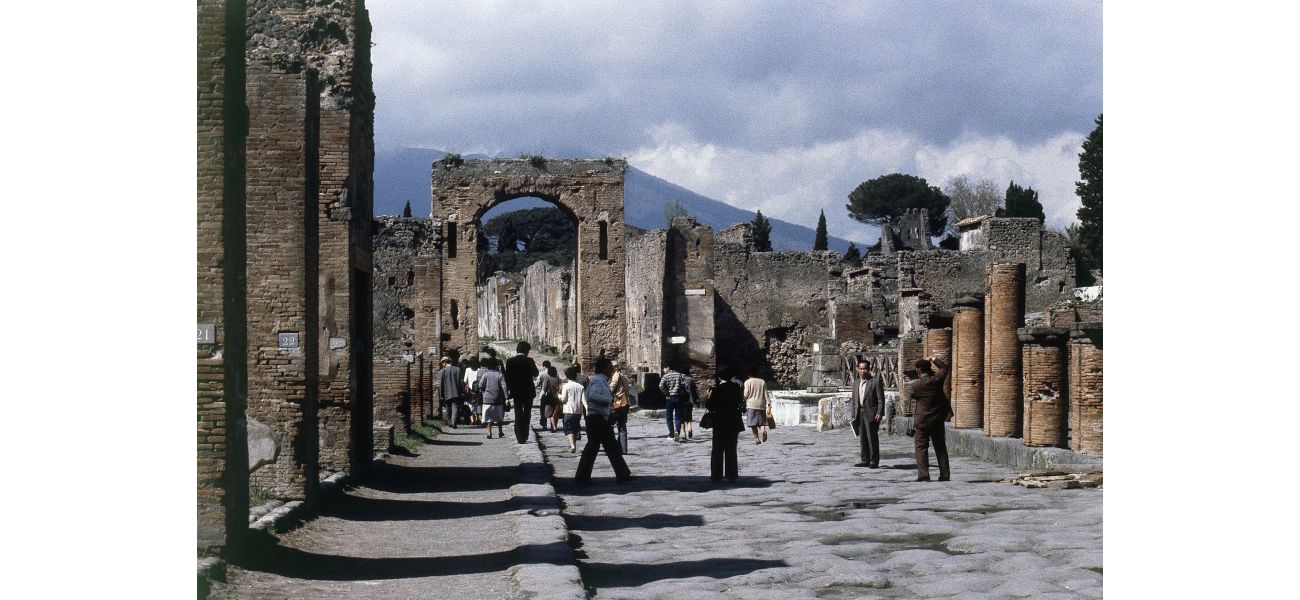Our understanding of Pompeii has been completely changed.
New findings from DNA tests of victims reveal shocking discoveries.
November 8th 2024.

Recent findings from researchers have uncovered surprising information about the victims of the infamous Mount Vesuvius eruption in Pompeii almost 2000 years ago. Through the examination of ancient DNA, it has been revealed that some of the individuals who perished may have been misidentified. Despite the devastation caused by the eruption in 79 AD, the layer of ash and sediment that covered the city provided optimal conditions for the preservation of bodies, buildings, and art.
In an effort to understand the victims and their stories, archaeologists created replicas of the impressions left by the bodies. These replicas were then used to form narratives, which were later adapted into films and books. One well-known sculpture, depicting an adult and a child in their final moments, was long believed to be a mother holding her baby. However, the recent study has disproved this narrative, revealing that the figures are actually a man and a young boy who are not related.
Alissa Mittnik, one of the researchers involved in the study, stated that these findings have significant implications for the interpretation of archaeological data and our understanding of ancient societies. By challenging previously held beliefs about the victims, the study has opened up new possibilities for who these people may have been. In fact, DNA testing on 14 casts of victims revealed that two of them had brown hair and one had a dark complexion with black hair. It was also discovered that the ancient Romans were descendants of Turkey, Sardinia, Lebanon, and Italy.
Another surprising revelation from the study was the debunking of a long-held theory that a group of four individuals were a family. DNA analysis showed that they were all male and not related, despite being found in close proximity to each other. David Caramelli, a co-author of the study, emphasized the unreliability of narratives based on limited evidence, stating that they often reflect the worldview of researchers at the time.
As the researchers continue to analyze the DNA, it is hoped that a greater understanding of the events at Pompeii will be gained. The discovery of the city in 1748 has had a profound impact on art, literature, and culture, with famous works such as Joseph Wright's Derby's Volcanic Canvases and Karl Briullov's The Last Day of Pompeii being inspired by the tragedy. With these new findings, the story of Pompeii may be rewritten, shedding light on the lives of those who were lost in the eruption.
In an effort to understand the victims and their stories, archaeologists created replicas of the impressions left by the bodies. These replicas were then used to form narratives, which were later adapted into films and books. One well-known sculpture, depicting an adult and a child in their final moments, was long believed to be a mother holding her baby. However, the recent study has disproved this narrative, revealing that the figures are actually a man and a young boy who are not related.
Alissa Mittnik, one of the researchers involved in the study, stated that these findings have significant implications for the interpretation of archaeological data and our understanding of ancient societies. By challenging previously held beliefs about the victims, the study has opened up new possibilities for who these people may have been. In fact, DNA testing on 14 casts of victims revealed that two of them had brown hair and one had a dark complexion with black hair. It was also discovered that the ancient Romans were descendants of Turkey, Sardinia, Lebanon, and Italy.
Another surprising revelation from the study was the debunking of a long-held theory that a group of four individuals were a family. DNA analysis showed that they were all male and not related, despite being found in close proximity to each other. David Caramelli, a co-author of the study, emphasized the unreliability of narratives based on limited evidence, stating that they often reflect the worldview of researchers at the time.
As the researchers continue to analyze the DNA, it is hoped that a greater understanding of the events at Pompeii will be gained. The discovery of the city in 1748 has had a profound impact on art, literature, and culture, with famous works such as Joseph Wright's Derby's Volcanic Canvases and Karl Briullov's The Last Day of Pompeii being inspired by the tragedy. With these new findings, the story of Pompeii may be rewritten, shedding light on the lives of those who were lost in the eruption.
[This article has been trending online recently and has been generated with AI. Your feed is customized.]
[Generative AI is experimental.]
0
0
Submit Comment





